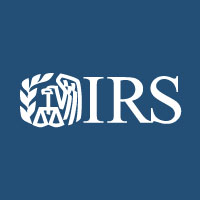Life Estate and Remainder
Collapse
X
-
Forgive me for intruding, but I've never had to deal with this, and have always been curious about it (but too lazy to look it up).
So let's put it into an example. Let's say original purchase price was $100,000 and sales price was $200,000 (and assume no improvements or other adjustments to Basis). So is the following how it would work?
Life Tenant Basis = $100,000 x 0.64337 (factor at time Life Estate was created)
Life Tenant Selling Price = $200,000 x 0.19523 (factor at end)
Remainderman Basis = $100,000 x 0.35663 (factor at time Life Estate was created)
Remainderman Selling Price = $200,000 x 0.80477 (factor at end)
Is that how the calculation works? Or I am I totally off? Thanks for indulging my curiosity, especially during a business time of year. -
Note how these factors change year by year. The current factor in any year is what Medicaid uses to determine if grantor of life estate may qualify for state-provided nursing care. The grantor's percentage of gain is considered income to her when the house is sold during her lifetime.Leave a comment:
-
At age 63 the table factors were .64337 (life tenant) and .35663 (remainderman). Now at age 93, the life tenant has "less" ownership and the remainderman has "more" ownership. Now the table factors are .19523 and .80477 respectively - make sense?Leave a comment:
-
NYEA - When you say, "...but now the factors are determined by the taxpayer's 93 year old age.", what do you mean by that?Leave a comment:
-
TTB - you're rate of 6.4% is correct but I would suggest just using the historical 7520 rates for a one-step result. Just google 7520 historical rates - your method works - this is just easier.Here is a link to Table S. It's be so long since I've used it, I have a question. Obviously, you reference the age of the mom (63-years old) at the time the life estate was created. Don't you use also use the interest rate table based on 120% of the annual mid-term applicable rate for the month in which the life estate was created?
If so, let's say the life estate was created in June 1993 and mom was 63. The annual applicable Federal rate for June 1993 was 5.33% so 120% would be 6.4%. That would yield a life estate at 64.337% and the remainder interest at 35.663%.
https://www.irs.gov/retirement-plans/actuarial-tables
The life tenant and remainderman factors are correct for the time of transfer but the income tax regulations indicate that due to the passage of time when the house is sold you use the same 6.4% rate but now the factors are determined by the taxpayer's 93 year old age.Leave a comment:
-
What happens with Table S when both mom and dad (different ages) are alive and the life estate is created. Which Table to use?Leave a comment:
-
Here is a link to Table S. It's be so long since I've used it, I have a question. Obviously, you reference the age of the mom (63-years old) at the time the life estate was created. Don't you use also use the interest rate table based on 120% of the annual mid-term applicable rate for the month in which the life estate was created?
If so, let's say the life estate was created in June 1993 and mom was 63. The annual applicable Federal rate for June 1993 was 5.33% so 120% would be 6.4%. That would yield a life estate at 64.337% and the remainder interest at 35.663%.
Last edited by ttbtaxes; 02-15-2020, 08:31 AM.Leave a comment:
-
Not a simple process - you will need to use the §7520 rates and the valuations in IRS Table S. There are 2 sales and the section 121 exclusion is available to either (or both) if they satisfy the 2 of 5 year rule.Mother gave son remainder interest in her home in 1993 which had a cost basis of 20175. She is now 89 years old and her and son sold the house for $30,000. My question is: is the cost basis (20175) and
the sales price ($30,000) both prorated by the Life estate and remainder interest table. Son 70 % and mother 30 %?Leave a comment:
-
You are correct, the basis is the mothers basis. The mother and son may qualify for the section 121 exclusionLeave a comment:
-
When you sell a home with a life estate, the IRS divides up the capital gains based on a formula involving the age of the tenant -- based on her life expectancy, in other words. If the gain on the house is $9825 and the formula shows the remainderman and the life tenant currently have a 70-30 interest in the home, you each apply your percentage to the gain.
Leave a comment:
-
Life Estate and Remainder
Mother gave son remainder interest in her home in 1993 which had a cost basis of 20175. She is now 89 years old and her and son sold the house for $30,000. My question is: is the cost basis (20175) and
the sales price ($30,000) both prorated by the Life estate and remainder interest table. Son 70 % and mother 30 %?Tags: None
Disclaimer
Collapse
This message board allows participants to freely exchange ideas and opinions on areas concerning taxes. The comments posted are the opinions of participants and not that of Tax Materials, Inc. We make no claim as to the accuracy of the information and will not be held liable for any damages caused by using such information. Tax Materials, Inc. reserves the right to delete or modify inappropriate postings.

Leave a comment: